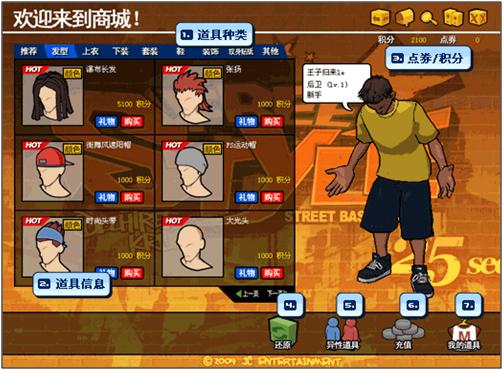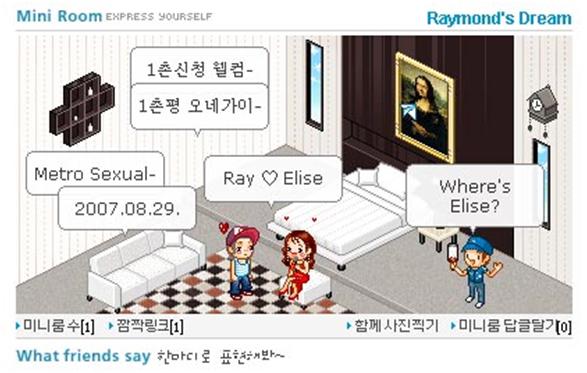- Wondering how to get Monopoly GO! free rolls? Well, you’ve come to the right place. In this guide, we provide you with a bunch of tips and tricks to get some free rolls for the hit new mobile game. We’ll …
Best Roblox Horror Games to Play Right Now – Updated Weekly
By Adele Wilson
Our Best Roblox Horror Games guide features the scariest and most creative experiences to play right now on the platform!The BEST Roblox Games of The Week – Games You Need To Play!
By Sho Roberts
Our feature shares our pick for the Best Roblox Games of the week! With our feature, we guarantee you'll find something new to play!All Grades in Type Soul – Each Race Explained
By Adele Wilson
Our All Grades in Type Soul guide lists every grade in the game for all races, including how to increase your grade quickly!
Game? What game? I’m just here for the clothes
Thanks to Facebook games such as Farmville and Bejeweled Blitz, the concept of paying for virtual items is now widespread and familiar to most people. What was once a niche activity, limited to a few Second Life enthusiasts has become big business and one of the fastest growing segments of the games industry. In fact, some analysts predict that in a few years more revenue will be generated by buying in-game virtual goods that by buying the games themselves.

Thanks to Facebook games such as Farmville and Bejeweled Blitz, the concept of paying for virtual items is now widespread and familiar to most people. What was once a niche activity, limited to a few Second Life enthusiasts has become big business and one of the fastest growing segments of the games industry. In fact, some analysts predict that in a few years more revenue will be generated by buying in-game virtual goods that by buying the games themselves.
All of this might sound like a new trend…unless you happen to live in Asia, where this has been the case for several years. Most people know that China and Korea pioneered the development of free-to-play online games – largely as a way to generate revenues in markets where the predominance of piracy made it difficult to sell games at retail. However, what might still be surprising for many people is that not all the best-selling goods are powerful swords and other items that are useful to the player inside the game.

“Dude, you don’t really want to send me out to play dressed like this, do you? Please buy me something cooler.”
While it’s true that the so-called “functional items” are in high demand by players of hardcore MMOs, seeking to gain advantage over the competition (consider also that most Asian MMOs are designed to be nearly unplayable unless the player is willing to fork out some cash); in casual online games, designed for a broader audience and featuring a more diverse range of themes, the hottest items are not functional, but often decorative, such as virtual clothing for users to dress up their avatars. In fact, revenue for such decorative items accounts for up to 80% of the total revenue of most successful online casual games. Developers have learned that keeping up a steady supply of cool, interesting, and sometimes, just plain weird virtual clothes is key to capture users’ attention and to drive purchases. Walk into any online games developer’s office in Seoul or Shanghai and you’re likely to find a team fully devoted to virtual fashion design. Those wannabe Armanis toil day after day to bring you the very best in virtual couture – and they aren’t short of ideas!
Want proof? Let’s take a quick tour through one of the most successful online casual games: Audition Online.
Designed in Korea and originally released in 2004, the game is distributed across Asia, as well as in USA, Latin America and Europe. Every day, tens of millions of people log in to participate in what’s essentially a simple rhythm game (think Dance Dance Revolution with a keyboard). Doesn’t sound very compelling? Think again: what captivates people is not the gameplay per se, but the opportunity to express themselves, to look cool and to chat up other people. It’s all about expressing your individuality by buying non-existent, virtual clothes that are sold to everyone else in the game and then dancing in step with your fellow players. What better way to say “I’m unique”?
Let’s see what people are wearing today in the game!

Audition, now featuring international sensations, The Riverdancing Pandas
Accessing the game lobby, we choose a room and we get ready to “bust our sick moves”. Some people are already there: a couple of guys in ‘street’ clothes, a slick dude in a suit, a girl in a cutesy outfit and another in a pretty revealing bikini. Seems like a fun crowd, but maybe we can find something a bit more out of the ordinary?
Let’s try another room…
But why is everyone wearing only underwear, and not even particularly cool ones, but basic white undies? It seems we have stumbled upon a room full of newbies – users that have just created an account and haven’t yet purchased any clothing. Should they venture in another room dressed like that? No, they would be no doubt be object of scorn from more experienced, cooler player – and possibly kicked out! We’re witnessing a strange form of online peer pressure in action, cunningly exploited in this virtual environment to drive people to buy cool clothing ‘to fit in’ with their virtual peers. I don’t really want to be seen with those losers, so I’ll wander around a bit more.
Next room…
A couple of breakdancing guys (or girls?) in panda costumes! Cute kids or creepy furries? Next room…
A virtual wedding, with a couple dressed up to the nines surrounded by their best men and bridesmaids, dancing to an hip hop beat. I wish them all the best, and move on.
This whirlwind tour touched just on a few examples of virtual clothing purchased in the game, but was sufficient to demonstrate the variety of options available to players looking for a virtual makeover and/or alter ego.

A “mini-room” on the Korean platform Cyworld. This user has splurged on a virtual Mona Lisa. And why not?
The same variety of choice is replicated across a multitude of games in the region, and decorative items are estimated to make up at least 20% of the multi-billion virtual goods industry in Asia. In practice, people are spending at least $2 billion annually on items that have absolutely no function beyond making them look good inside a virtual world. This is not limited to virtual clothes, but to a wide range of items, such as furnishing and fittings for virtual rooms. It is a powerful reminder of the fact that, if you give people the opportunity to have fun by expressing their personality and by showing off with their friends, they will be very willing to engage and spend.
Now excuse me – if you don’t mind – I think there’s a virtual sale going on!
Giordano Bruno Contestabile is PopCap Games’ senior director of business development – Asia Pacific, a position he’s held for the last two and a half years. In that role he oversees business development, marketing and sales in the APAC region and is responsible for revenues in all channels: Online, Social, Mobile, Retail, Console, Advertising and New Platforms.
He is also involved in shaping the company’s strategy in Asia Pacific, with particular regard to the development and licensing of online and multiplayer products built in our Shanghai studio, and to the development and operations of social games.
Contestabile has more than 10 years of experience in management, business development and strategy, having worked in the Internet, media, mobile and games industries. Follow Giordano Bruno Contestabile on Twitter.
More articles...
Monopoly GO! Free Rolls – Links For Free Dice
By Glen Fox
Wondering how to get Monopoly GO! free rolls? Well, you’ve come to the right place. In this guide, we provide you with a bunch of tips and tricks to get some free rolls for the hit new mobile game. We’ll …Best Roblox Horror Games to Play Right Now – Updated Weekly
By Adele Wilson
Our Best Roblox Horror Games guide features the scariest and most creative experiences to play right now on the platform!The BEST Roblox Games of The Week – Games You Need To Play!
By Sho Roberts
Our feature shares our pick for the Best Roblox Games of the week! With our feature, we guarantee you'll find something new to play!All Grades in Type Soul – Each Race Explained
By Adele Wilson
Our All Grades in Type Soul guide lists every grade in the game for all races, including how to increase your grade quickly!







